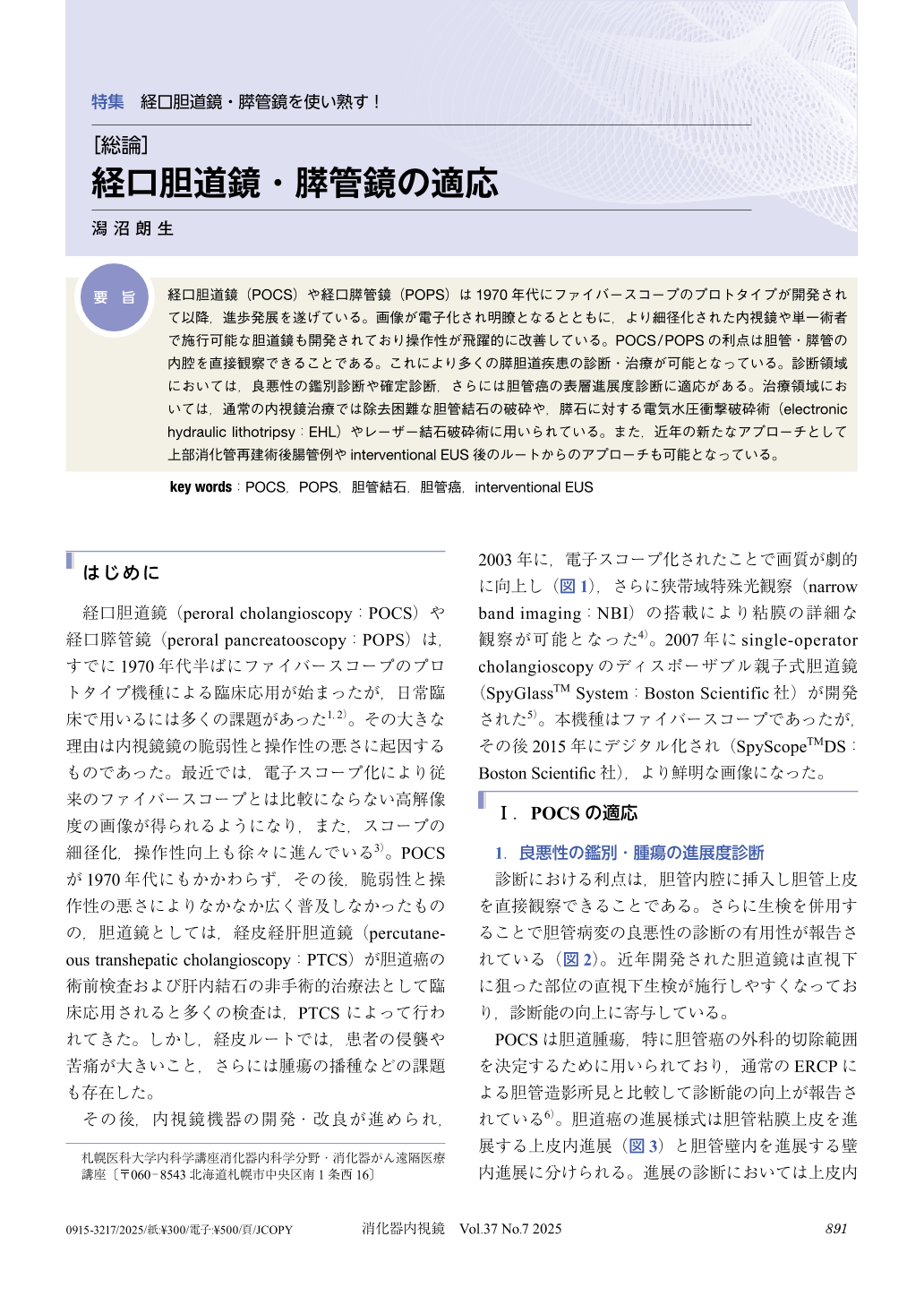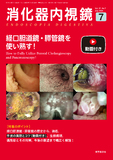Japanese
English
- 有料閲覧
- Abstract 文献概要
- 1ページ目 Look Inside
- 参考文献 Reference
要旨
経口胆道鏡(POCS)や経口膵管鏡(POPS)は1970年代にファイバースコープのプロトタイプが開発されて以降,進歩発展を遂げている。画像が電子化され明瞭となるとともに,より細径化された内視鏡や単一術者で施行可能な胆道鏡も開発されており操作性が飛躍的に改善している。POCS/POPSの利点は胆管・膵管の内腔を直接観察できることである。これにより多くの膵胆道疾患の診断・治療が可能となっている。診断領域においては,良悪性の鑑別診断や確定診断,さらには胆管癌の表層進展度診断に適応がある。治療領域においては,通常の内視鏡治療では除去困難な胆管結石の破砕や,膵石に対する電気水圧衝撃破砕術(electronic hydraulic lithotripsy:EHL)やレーザー結石破砕術に用いられている。また,近年の新たなアプローチとして上部消化管再建術後腸管例やinterventional EUS後のルートからのアプローチも可能となっている。
Peroral cholangioscopy (POCS) and peroral pancreatoscopy (POPS) have improved since the development of the prototype of the fiber scope in the 1970s. Images have become clearer with the development of electronic imaging, endoscopes with smaller diameters, dramatically improving operability. The advantage of POCS/POPS is that it allows direct observation of the lumens of the bile duct and pancreatic duct. This makes it possible to diagnose and treat many pancreatic and biliary diseases. In the diagnostic field, it is used for differential diagnosis of benign and malignant diseases, as well as for diagnosis of the superficial extension of bile duct cancer. In the therapeutic field, it is utilized for the fragmentation of bile duct stones that are difficult to remove with conventional endoscopic treatment, using electronic hydraulic lithotripsy (EHL) and laser lithotripsy of pancreatic stones. In addition, recently, it is also possible to approach the intestinal tract after upper gastrointestinal tract reconstruction surgery or from the route after interventional EUS.

© tokyo-igakusha.co.jp. All right reserved.


